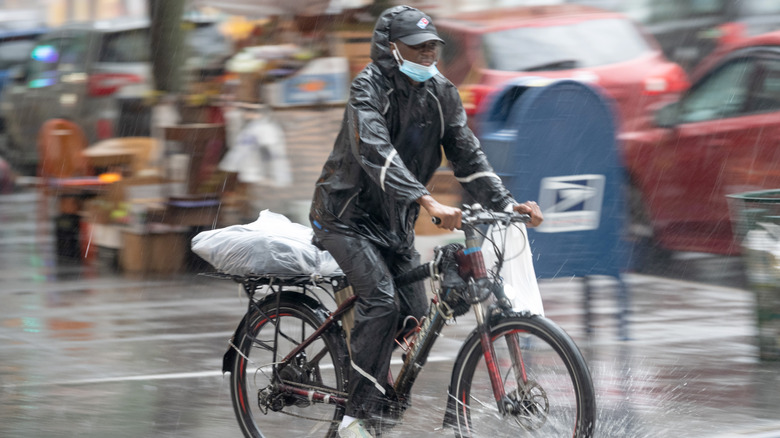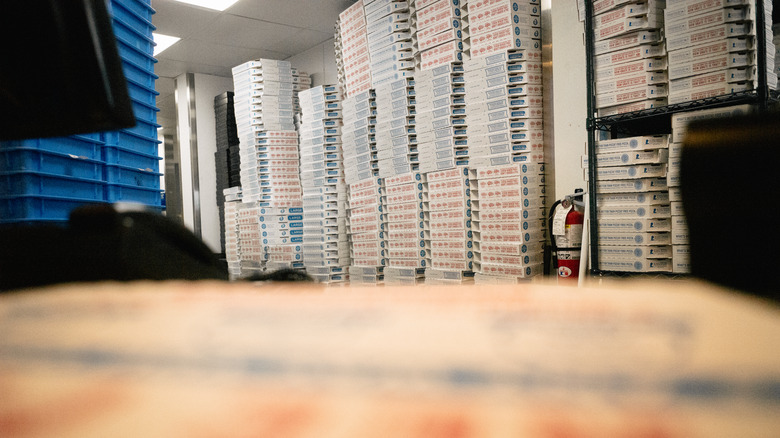Domino's Tempers Sales Expectations Amid Delivery Struggles
The history of pizza delivery can be traced back to the late 19th century when a pizza was delivered by an enterprising chef to Italy's Queen Margherita — and yes, the famed pie is named after her, says Food and Wine. However, it was not until the 1960s that pizza delivery became truly popularized, largely due to the efforts of one company: Domino's Pizza.
In 1960, Tom Monaghan and his brother James purchased a small pizza shop in Ypsilanti, Michigan called DomiNick's. After James sold his half of the business to Tom for a used Volkswagen Beetle, Tom renamed the store Domino's Pizza. From there, Tom began to experiment with delivery services, as he believed that this was the key to expanding his business. One of the first changes Tom made was to streamline the pizza-making process, allowing for faster delivery times. He also began offering a guarantee that pizzas would be delivered within 30 minutes or they would be free. This guarantee helped to differentiate Domino's from competitors and attract a loyal customer base.
Today, Domino's is one of the largest pizza chains in the world, with over 17,000 stores in more than 90 countries. Ironically, though, the changing post-pandemic economy has meant that Domino's delivery business is a less-profitable business model than it once was.
Dine-in is delivery's doom
As QSR Magazine reports, Domino's, which generates roughly 60 percent of its sales from delivery orders, saw its growth numbers slip recently as people have reduced spending amid rising inflation. With expenses rising across the board, consumers have apparently turned inward, preparing their own meals at home rather than paying the relatively high costs that come with having food delivered. Further, with the pandemic largely in the past, people are coming to value sit-down dining experiences that were largely verboten due to social-distancing regulations. This has led the company to downgrade sales growth projections for the next two to three years.
The pandemic caused a surge in delivery, as dining rooms shuttered across the world. Overnight, ordering out became the new norm, and businesses that excelled in getting food to hungry customers saw their margins increase. As the world returns to some semblance of normalcy, so have dining trends. Domino's is not alone in feeling the brunt of this shift. NBC News notes that food-delivery apps, which fill in for companies that lack in-house delivery capabilities, have seen their stock prices take a hit now that people can dine out.
Domino's has also pursued promotions meant to steer customers away from delivery. Recently, the chain began offering compensation — referred to as "customer tipping" — for those who chose to pick up their own food. The move is meant to reward loyalty and initiative in times when customers are being judicious about where they spend.

